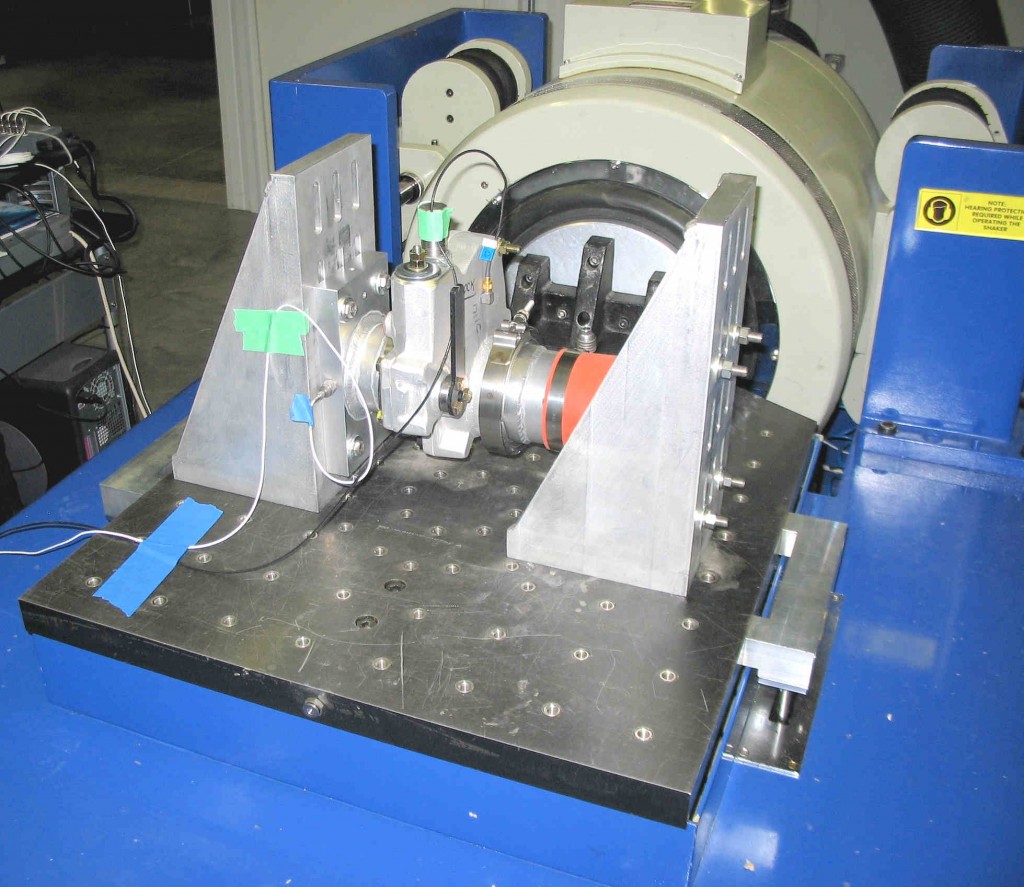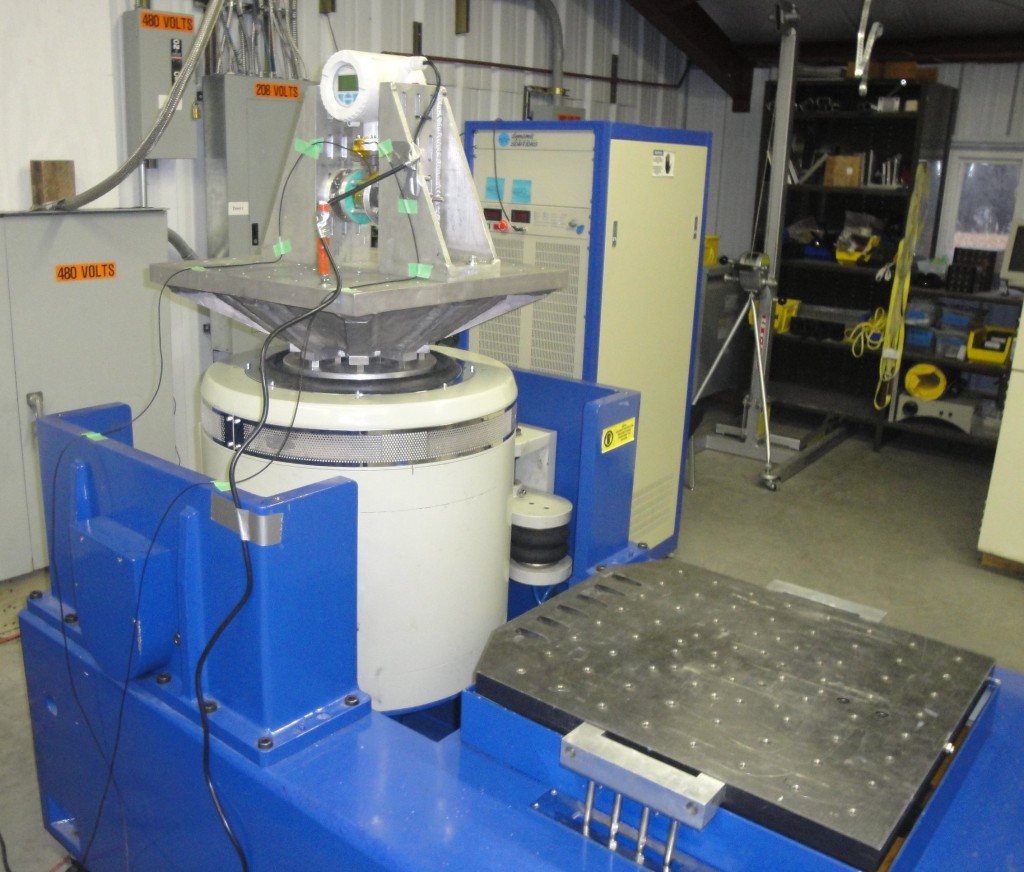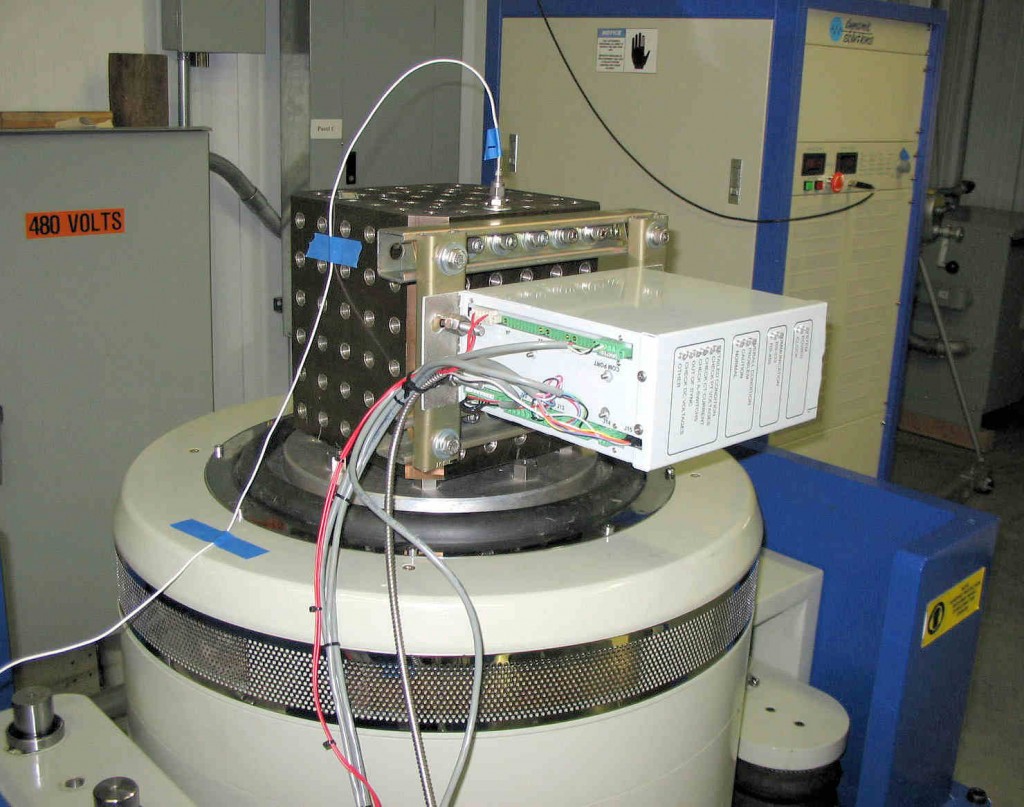Most vibration test specifications require vibration testing along 3 orthogonal axes. Vibration testing using most ElectroDynamic (ED) Shakers is performed 1 axis at a time. However the orientation of the ED shaker or the Device Under Test (DUT) can be changed to complete testing along all 3 orthogonal axes.
Many ED shakers can be rotated and connected to a horizontal table called a slip table,

Figure 1. The slip table is used to test 2 axes by rotating the DUT 90 degrees.

The 3rd axis is performed by rotating the ED shaker vertically, Figure 2.

There are also other ways to orient DUT’s along 3 axes by using special fixtures such as angles or cubes, Figure 3.
Does the axis sequence matter in vibration testing? In DES’s opinion, the axis sequence should NOT matter when vibration testing. If the vibration G Levels along one axis are much worse than the other axes, perhaps it makes more sense to start or end with this axis.
Presently, Multi DOF or three axis ED shakers are being introduced. They are able to perform testing along three axes simultaneously. Perhaps they will change the way we perform vibration testing.